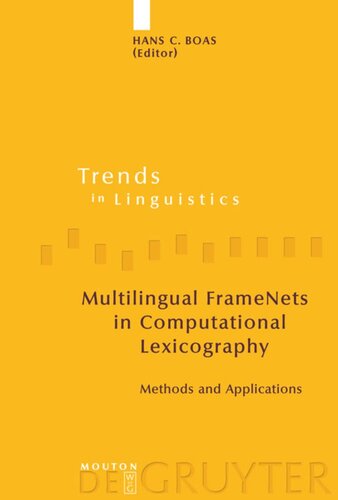

Most ebook files are in PDF format, so you can easily read them using various software such as Foxit Reader or directly on the Google Chrome browser.
Some ebook files are released by publishers in other formats such as .awz, .mobi, .epub, .fb2, etc. You may need to install specific software to read these formats on mobile/PC, such as Calibre.
Please read the tutorial at this link: https://ebookbell.com/faq
We offer FREE conversion to the popular formats you request; however, this may take some time. Therefore, right after payment, please email us, and we will try to provide the service as quickly as possible.
For some exceptional file formats or broken links (if any), please refrain from opening any disputes. Instead, email us first, and we will try to assist within a maximum of 6 hours.
EbookBell Team

5.0
98 reviewsThis book demonstrates how the underlying principles of the English-based FrameNet project are successfully applied to the description and analysis of typologically diverse languages.
The stimulating collection of articles brings together insights from lexical semantics, corpus linguistics, computational lexicography, machine learning, and psychology to address three main questions:
The contents exemplifies the liveliness of current research on cross-lingual applications of Frame Semantics to natural language processing.